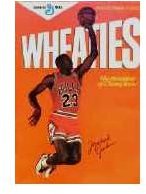Understanding What Motivates People to Buy Products: Market Segmentation
Introduction
Knowing what motivates people to buy products and services is essential to maintaining the viability of your company. Except for the very largest companies, mass marketing is far too expensive as a means to generate a customer or client base. Instead, savvy entrepreneurs incorporate at least some of the principles of market segmentation. Depending on the nature of your business, appealing either to bargain consciousness or aspirational marketing is another means of motivating people to buy your products or securing clients to contract for your services. Another means of gaining a sophisticated, loyal customer or client base is to incorporate sustainability into your marketing approach.
The Hidden Persuaders
Moviegoers of a certain age may remember the iconic theater “snipe” of the 1950s and 1960s with dancing concessions singing “Let’s All Go to the Lobby . . . " urging movie theater patrons to indulge in oversized servings of popcorn, soft drinks and snacks. This short animated clip shown before and between feature films was embraced by theater owners who, then as now, realized their actual profits not from the films they showed, but from concession sales. However, the clip appealed to the unique theater experience rather than simple gluttony. It was a playful appeal to entice customers away from their living room couches and the hypnotic glow of television by making a movie outing seem special.
The “snipe” touched on what Vance Packard called “motivational research” in his seminal book, The Hidden Persuaders. According to Packard, motivational research focused on the unspoken, often unconscious needs of consumers in a bid to sell products, Mark Greif writes in The New York Times. A famous example of motivational research was the discovery by cake mix manufacturers that homemakers of the 1950s wanted to feel as though they were “baking,” and responded by requiring users to add eggs and milk, whereas before the mixes only required water.
Many of the techniques Packard described, such as relentless repetition and short, punchy “sound bites” are still in wide use today – in every venue from campaign advertising to movie “product placement” to promoting the latest “must-have” toy to pushing breakfast cereal from the shelves of your local supermarket onto your kitchen table.
However, as advertising has become ubiquitous and technology has advanced, the “market,” that is, the consumer, has become satiated, overstimulated and somewhat skeptical, if not cynical. Only the very largest companies with the deepest advertising budget pockets can afford to plaster their messages across newspapers, magazines, television, direct mail and the Internet.
Some large advertisers attempt to position their merchandise as prestige brands with luxe packaging or limited distribution to upscale retail outlets, although their merchandise is essentially the same as similar items in the market. This strategy, a somewhat insincere attempt to achieve product differentiation, is extremely expensive, and often falls flat when customers fail to notice a significant benefit, the Encyclopedia of Small Business notes.
Slicing the Pie
Market segmentation is just what it sounds like – separating aspects of the potential merchandising target into segments with common features. In the broadcast television market, the prime advertising target segment falls between the ages of 18 to 49. Other common segmentation categories include income, education, political orientation and household composition. Successful market segmentation is driven by determining what characteristics define the most likely customers for your products, or clients for your services. Your marketing efforts should convince your target audience that your product or service will fulfill their real or perceived needs better than those of your competitors.
Wal-M

art became the largest retailer in the world by appealing to budget-conscious consumers with its unapologetic slogan of “Always Low Prices,” recalling the strategy the company has employed since Sam Walton opened his first store in 1962. As a major retailer, Wal-Mart can afford to maintain a ubiquitous advertising strategy designed to reach this vast audience through broadcast and cable television commercials, newspaper fliers, magazine spreads and an Internet storefront.
By contrast, members of the consumer market segment known by the acronym LOHAS (Lifestyles of Health and Sustainabilty) seek products and services that boast organic origins, environmentally conscious manufacturing and distribution methods, and that promote social change and wellness – and are often prepared to pay a premium for them. Reaching this market of approximately 41 million American consumers requires retailers and service providers to establish “green” credentials such as offering buyback programs for outdated electronics or providing hybrid options for rental cars. Many environmentally conscious consumers are younger and are often more responsive to social networking and Internet marketing campaigns than are older consumers, according to a 2009 report published in the Journal of Interactive Advertising.
Keeping Up With the Joneses
“Aspirational marketing” often drives purchases of high-ticket nonessential goods such as jewelry and luxury cars, or even everyday indulgences such as premium chocolates. One of the funniest moments in television history occurred during “Went With the Wind,” a spoof of “Gone With The Wind” performed as a segment of “The Carol Burnett Show.” In one scene, “Starlett” descends a staircase wearing a dress made of curtains snatched from a window of her plantation parlor, complete with curtain rod. When “Ratt” compliments her ensemble, “Starlett” responds, “I saw it in the window and I just couldn’t resist it.”
Like “Starlett,” many consumers aspire to possess items that symbolize luxury and a higher socioeconomic class. Retailers and manufacturers have utilized such “aspirational marketing” since the days of King George III, whose wife, Queen Charlotte, endorsed a popular line of china designed by Josiah Wedgwood. Commoners who bought the china could aspire to a life of royalty, or at least that of a higher social station, according to marketing expert Nancy Koehn, quoted in Entrepreneur.
References
- Around the Mall. “Carol Burnett – We Just Can’t Resist Her!,” in Smithsonian.com
- Environmental Leader: 72% of Rental Car Customers Want Hybrid Option.
- Filmack Studios Classic Trailers. “Let’s All Go to the Lobby”
- It’s the Carol Burnett Show: Video Capture – “Went With the Wind”
- Jenny Kee. “Marketing Expert Nancy Koehn,” in <em>Entrepreneur</em>,
- Jiyoung Cha. “Shopping on Social Networking Web Sites: Attitudes toward Real versus Virtual Items,” in <em>Journal of Interactive Advertising</em>
- Lifestyles of Health and Sustainability: LOHAS.com
- Mark Greif. “The Hard Sell,” in <em>The New York Times</em>
- Kevin Hillstrom and Laurie Collier Hillstrom, editors. “Market Segmentation,” in <em>Encyclopedia of Small Business</em>
- “Market Segmenetation,” in <em>Inc.</em>
- Maxwell Statistics Corporation: What Does a Market Segmentation Do for Marketing?
- “Nearly Half of Mobile Customers Want Green Telecom, Report Says,” in <em>Green Electronics Daily</em>
- Patsula Media. <em>Personal Planning Guidebook #46: Understanding Why People Buy</em>
- Suzidoll. “Let’s All Go to the Lobby,” in <em>Movie Morlocks</em>
- Unity Marketing. “Review of <em>Why People Buy Things They Don’t Need: Understanding and Predicting Consumer Behavior</em>, by Pamela Danzinger” (from Publisher’s Weekly)
- Visit Gettysburg.com: Carol Burnett’s Gone with the Wind Curtain Dress
- Walmart.com: Always Low Prices
Image credits:
